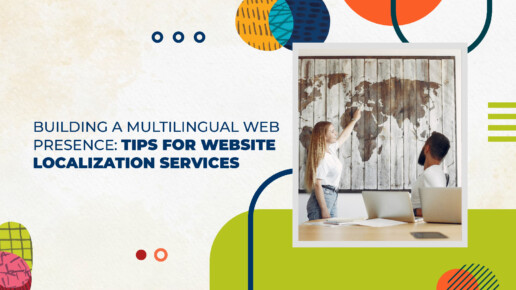Building a Multilingual Web Presence: Tips for Website Localization Services
In today’s interconnected world, having a strong online presence is essential for businesses to thrive. However, with the global marketplace becoming increasingly diverse, simply having a website in one language may not suffice. Building a multilingual web presence through effective website localization is crucial for reaching international audiences and expanding your business’s reach.
Introduction to Multilingual Web Presence
A multilingual web presence refers to the ability of a website to cater to users from different linguistic backgrounds. This involves not only website translating the content but also adapting it to suit the cultural preferences and nuances of the target audience. By offering content in multiple languages, business services can engage with a wider audience and establish stronger connections with potential customers worldwide.
Importance of Website Localization
Enhancing User Experience
Website localization translation goes beyond mere translation. It involves adapting the content, design, and functionality of a website to resonate with the target audience. By providing a localized experience, businesses can enhance user satisfaction and improve engagement, leading to higher conversion rates and customer loyalty.
Reaching Global Audience
In today’s globalized economy, reaching international markets is essential for business growth. By localizing their websites, businesses can effectively communicate their message to customers in different regions, thereby expanding their reach and tapping into new markets.
Understanding Website Localization Services
Translation vs. Localization
While translation services involves converting text from one language to another, localization takes into account cultural differences, idiomatic expressions, and regional preferences to ensure that the content resonates with the target audience. This may involve adapting images, colors, symbols, and even website layout to suit the cultural norms of the target market.
Cultural Adaptation
Cultural adaptation is a key aspect of website localization. It involves understanding the cultural nuances and preferences of the target audience and incorporating them into the website content. This may include using local idioms, references, and imagery that resonate with the target market.
Tips for Effective Website Localization
Conducting Market Research
Before embarking on website localization, it is essential to conduct thorough market research to understand the preferences, expectations, and behavior of the target audience. This will help tailor the content and design of the website to suit the needs of the local market.
Optimizing SEO for Different Languages
When localizing a website, it is important to optimize it for search engines in different languages translation. This involves translating keywords, meta tags, and other SEO elements to ensure that the website ranks well in local search results and attracts organic traffic from the target market.
Ensuring Legal Compliance
When expanding into international markets, businesses must ensure that their websites comply with local laws and regulations. This may involve translating legal disclaimers, privacy policies, and terms of service to ensure that they are legally binding and enforceable in the target market.
Testing and Quality Assurance
Before launching a localized website, it is essential to conduct thorough testing and quality assurance to ensure that it functions smoothly and provides a seamless user experience. This may involve testing for linguistic accuracy, functional compatibility, and cultural appropriateness to identify and address any issues before they arise.
Common Challenges in Website Localization
Linguistic and Cultural Nuances
One of the biggest challenges in website localization is dealing with linguistic and cultural nuances that may not have direct equivalents in the target language. This requires careful adaptation and creative problem-solving to ensure that the content remains accurate and culturally appropriate.
Technical Compatibility
Another challenge in website localization is ensuring that the localized website is compatible with different devices, browsers, and operating systems used by the target audience. This may involve optimizing the website for mobile devices, ensuring compatibility with different screen sizes, and addressing any technical issues that may arise.
Time and Resource Constraints
Website localization can be a time-consuming and resource-intensive process, especially for businesses with limited resources and tight deadlines. It requires coordination between translators, designers, developers, and other stakeholders to ensure that the project is completed on time and within budget.
Conclusion
Building a multilingual web presence through effective website localization is essential for businesses looking to expand their reach and tap into international markets. By understanding the cultural preferences and linguistic nuances of the target audience and adapting their content and design accordingly, businesses can enhance user experience, improve engagement, and drive growth in new markets.

